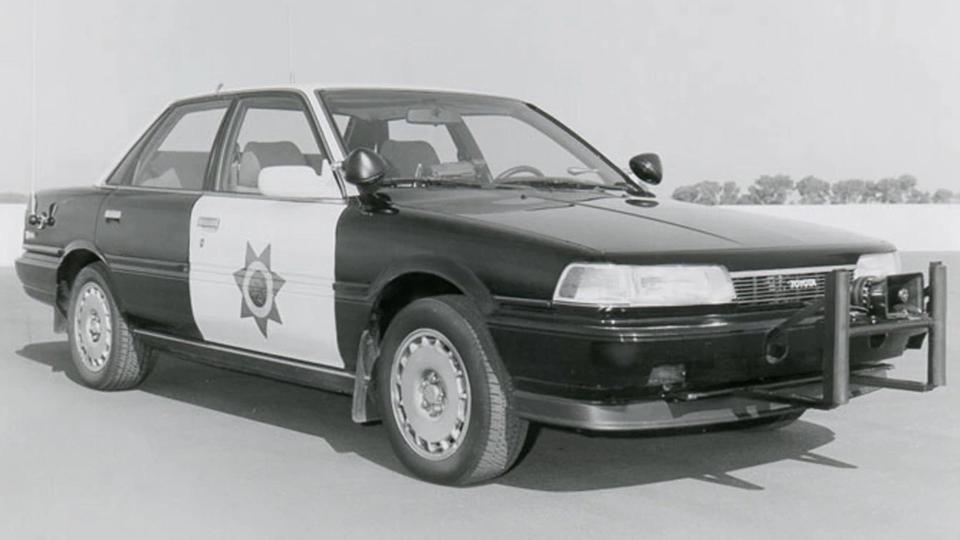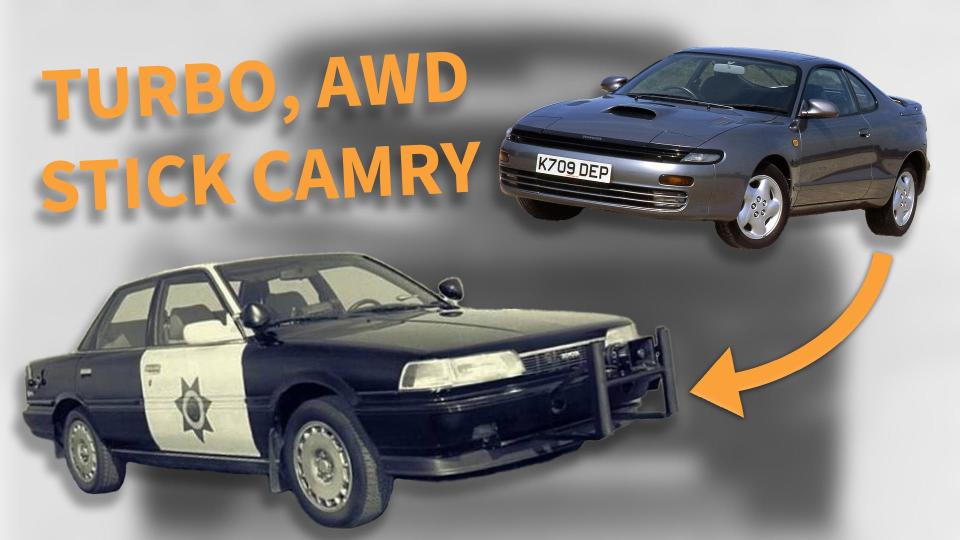The Full Story Behind the CHP's Turbo Toyota Camry Cop Car With Celica WRC Parts

Not long ago, you might've seen a picture online of a 1980s Toyota Camry in a California Highway Patrol livery. Supposedly it had the guts of the turbo, all-wheel-drive Celica GT-Four, which would make it one of the nastiest sleepers of the decade. Well, I'm pleased to tell you that every last bit of that is true. Not only did the CHP really have such a Camry, but it actually shared parts with the World Rally Championship Celica.
This I learned from speaking to Joel Luz, one of the first people outside Japan to explore the performance potential of Toyotas. Originally from the Philippines, Luz wound up in the United States where he founded Toysport, the nation's original TRD distributor. Toyota often entrusted prep of show cars and special vehicles to Toysport, which meant it had unparalleled access to Toyota's parts network. So, when Toyota decided it wanted in on the business of selling police cars, it called on Luz's expertise.

Toyota centered its efforts on the CHP, which became the country's first police force to trial a foreign car make according to a 1989 story by The Los Angeles Times. Though state law reportedly prohibited using foreign-made cars on the force, Toyota was building Camrys in Georgetown, Kentucky by that time. It didn't hurt that Toyota sweetened the deal by selling the CHP seven Camrys for $1, on the condition that it could repurchase them after testing.
The idea was that the CHP would give front-wheel-drive cars a try for their stability in snow, as it'd save troopers the effort of installing and removing tire chains when patrolling the mountain foothills. Specifically, the CHP thought the mountains northeast of Los Angeles would be the perfect place to test them, per a Facebook post by Toysport.
I gather that most of the test cars were naturally aspirated four-cylinders, with one or more V6 models thrown in (LA Times reports multiple, Luz remembers just one). They accounted for only one of the two higher-performing versions tested, the other being the black sheep of the bunch: The turbo car.

The CHP's turbo Camry used the drivetrain from the second-gen (or ST185) Celica All-Trac Turbo, also known as the GT-Four. At its heart was the 2.0-liter, turbocharged 3S-GTE four-cylinder, which was also used in the MR2 and the WRC Celica. Luz said the Camry and Celica practically shared a chassis, so installing it was a piece of cake.
So was getting more power out: He added some HKS bolt-ons, bored out the CT26 turbo (an early twin-scroll) to fit the biggest compressor wheel he could, and turned boost up by three to five psi with an electronic boost controller. Four-wheel-drive chassis dynamometers didn't exist then, so Luz doesn't know for certain how much power it made. But he estimated "easily 280 to 300" horsepower and "a little more torque."
That engine was backed by a five-speed manual shared between the All-Trac Camry and Celica, and split power between the front and rear axles. Luz added limited-slip differentials front and rear, and shortened the final drive ratio to account for larger-diameter 15-inch steel wheels and special Goodyear police tires.

 Yahoo Autos
Yahoo Autos 